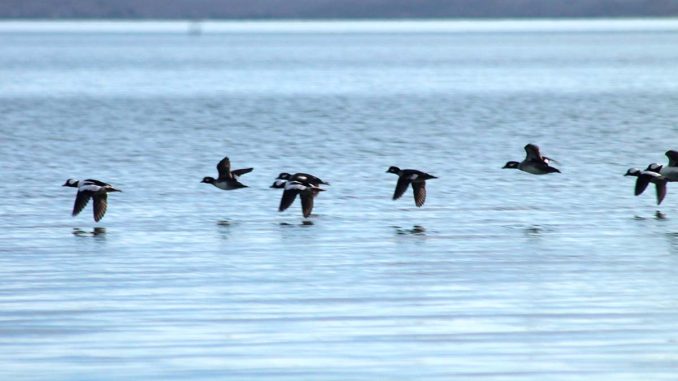
The phrase “flying south for winter” may conjure images of V-shaped flocks of geese heading toward Florida — or perhaps their human equivalents heading to the airport — but for many species of migrating geese and ducks, Long Island is the southern destination. Here’s glimpse at some of the winter species that can be spotted around the region starting in early October — roughly when pucks start dropping in the NHL. As winter settles in, it’s a great time to bundle up and stroll the beaches and pond-side paths to catch a glimpse.
New York State Parks Department naturalist Mary Laura Lamont, who will guide nature walks the next few Saturdays at Hallock State Park Preserve in Riverhead, said mornings are best for birding, and the worse the weather, the better. “Certain ducks prefer bays with calmer water and others prefer the Long Island Sound,” she said, adding that other winter species, including common eiders, Barrow’s goldeneye ducks, buffleheads, red breasted mergansers and long tail and harlequin ducks, also visit the area. “Certain birds are increasingly more common,” she said. “Eiders and razorbills are coming in more.”
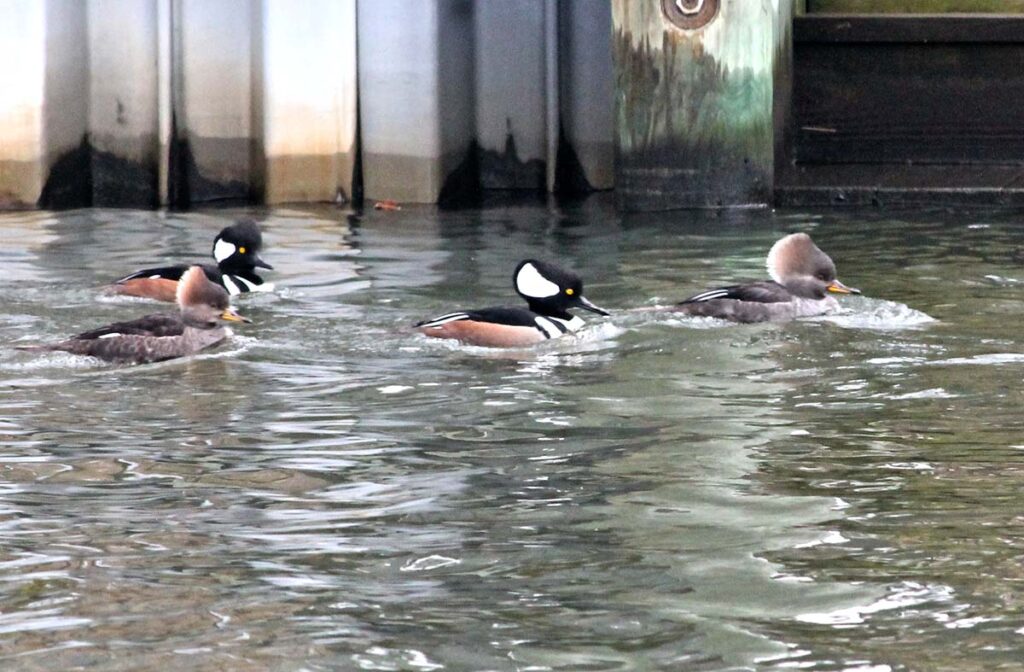
The hooded merganser is a small diving duck with a thin serrated bill often found in the calm waters of marinas and canals. The males have a striking black-and-white crest, and the females are mostly brown with a more yellow bill.
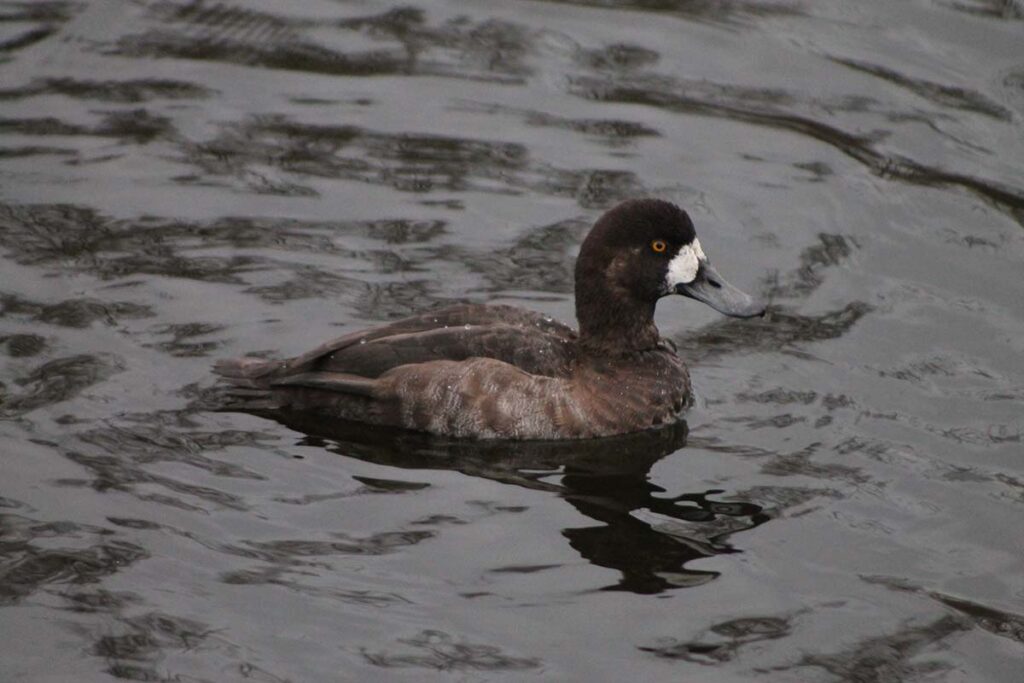
Greater scaup prefer saltwater bays and coves but can also be found in freshwater. A round-headed diving duck, the males have a black breast, gray back, white sides and yellow eyes. Females are mostly brown but turn grayer in winter with a white patch above the bill.
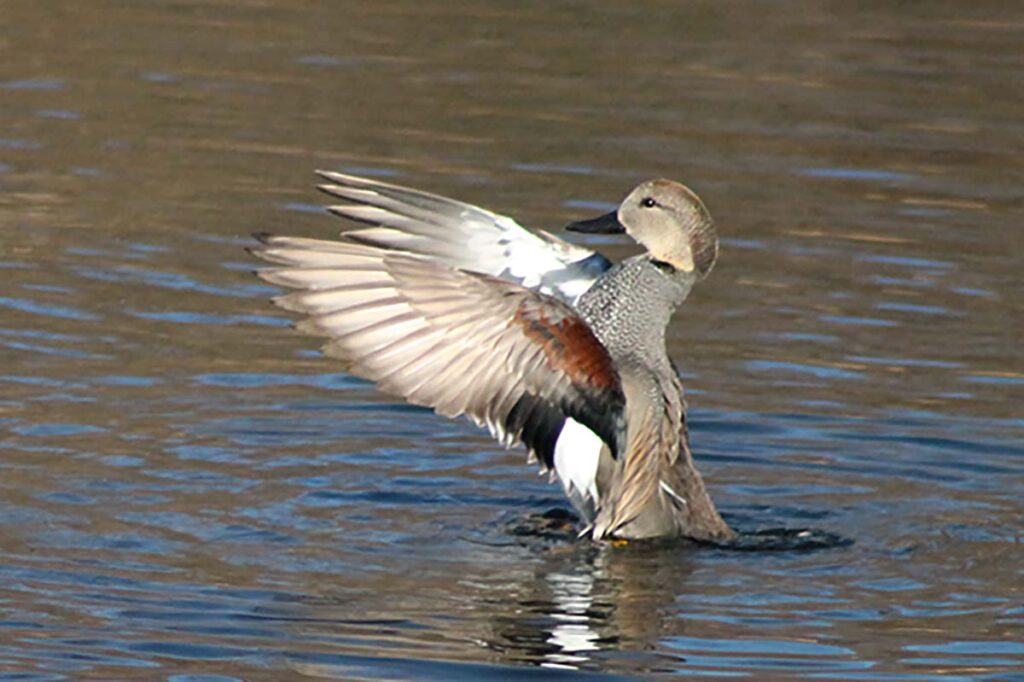
Gadwall are found mostly in shallow wetlands and ponds often feeding “upend.” Fairly large ducks, they can be found in small flocks, often with similarly-sized mallards.
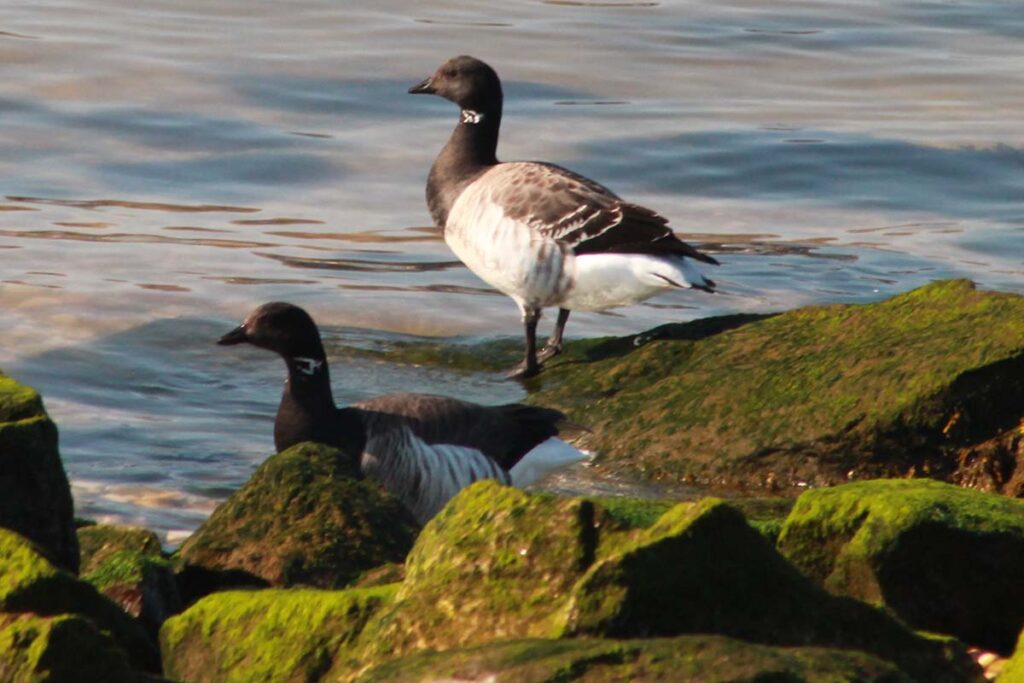
Large flocks of brant can be seen — and heard — in salt marshes, rocky coastlines and sheltered bays. They are small geese that breed on the on the high Arctic tundra and migrate here in winter.
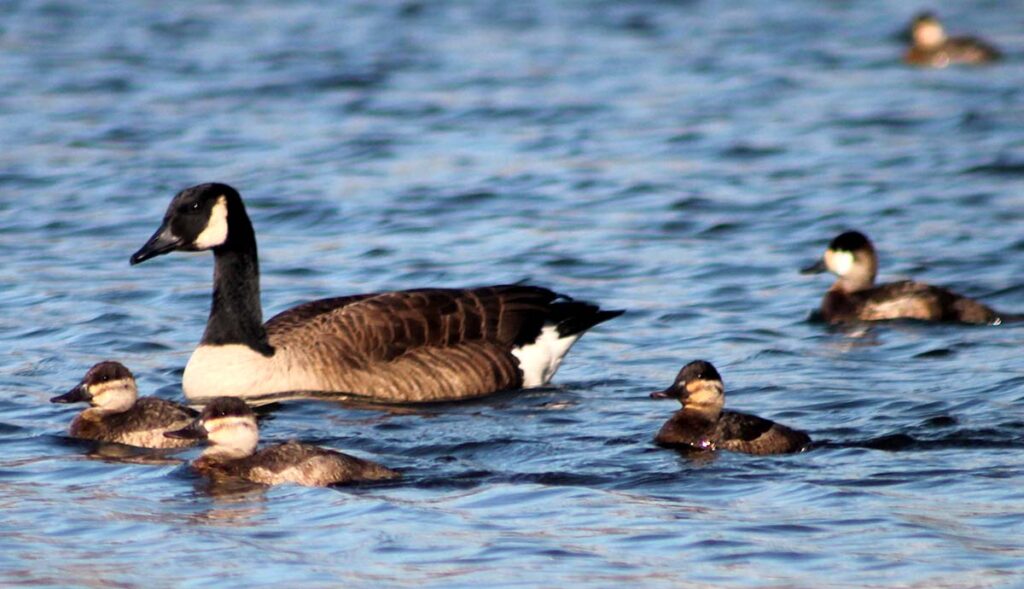
Ruddy ducks are small with a fan-shaped tail that sticks up out of the water. They can be found in ponds and bays, often in tight groups.
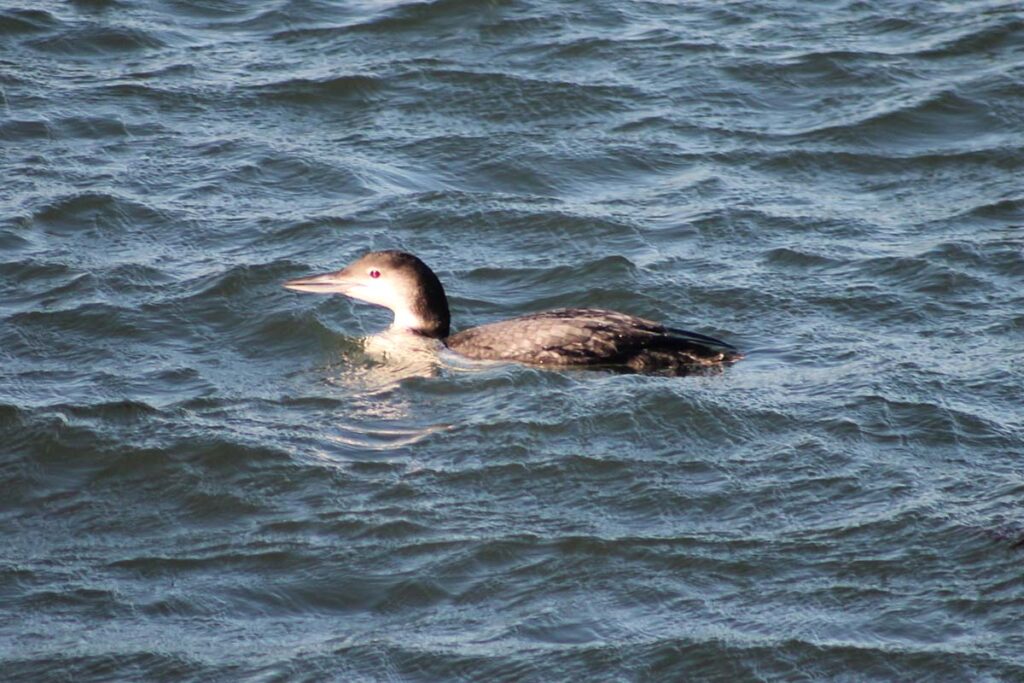
Common loons breed in the boreal forests of northern Canada and Alaska. They can be seen here in winter diving in loose flocks in near-shore ocean waters and sheltered bays. Built for swimming, loons, which are not actually ducks despite their similarities, have trouble walking on land because their feet are so far back on their bodies.
Check our calendar for nature walks guided by Ms. Lamont and others throughout the east end with the North Fork Audubon Society.

